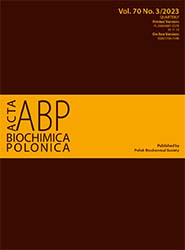Pheochromocytoma and paraganglioma in children and adolescents
Pheochromocytoma and Paraganglioma
Abstract
Pheochromocytoma (PPC) and paraganglioma (PGL) are the tumors that rarely occur in the pediatric population (PPGL). Both originate from chromaffin cells, pheochromocytoma is localized in the adrenal gland, whereas paragangliomas are regarded as the tumors present in other localizations, from head to the pelvis. The clinical image is characterized by the presence of the sustained hypertension, headaches, sweating, palpitations. The symptoms are caused by the catecholamine secretion or are related to tumor mass pressure on different organs. The catecholamines and their metabolites levels in urine collection or plasma are necessary for further evaluation of the diagnosis. In pediatric population the tumors occur in multiple familial syndromes such as Multiple Endocrine type 2, Neurofibromatosis type 1, Von Hippel-Lindau syndrome, Familial Paraganglioma syndrome are related to specific mutations (SDHx, RET, VHL, NF1) leading to the characteristic phenotype. The radiological and nuclear imaging are an important part of the examination. Although CT and MR are reported to have overall good sensitivity for the tumor detection, further analysis with nuclear imaging is recommended for the specified diagnosis. Right now 68GA-DOTATATE is regarded as the tracer of choice, leading to the complex evaluation of patients with different mutations and metastatic disease. The treatment of choice is the tumor excision. Also, lately new therapeutic approaches including genetically targeted therapies are under investigation for more complex treatment of tumors with underlying genetic cause or metastatic disease. Long term follow-up after treatment to avoid recurrence or to detect it in early stadium must be performed.
Copyright (c) 2023 Teresa Stachowicz-Stencel, Natalia Pasikowska, Anna Synakiewicz

This work is licensed under a Creative Commons Attribution 4.0 International License.
Acta Biochimica Polonica is an OpenAccess quarterly and publishes four issues a year. All contents are distributed under the Creative Commons Attribution-ShareAlike 4.0 International (CC BY 4.0) license. Everybody may use the content following terms: Attribution — You must give appropriate credit, provide a link to the license, and indicate if changes were made. You may do so in any reasonable manner, but not in any way that suggests the licensor endorses you or your use.
Copyright for all published papers © stays with the authors.
Copyright for the journal: © Polish Biochemical Society.


